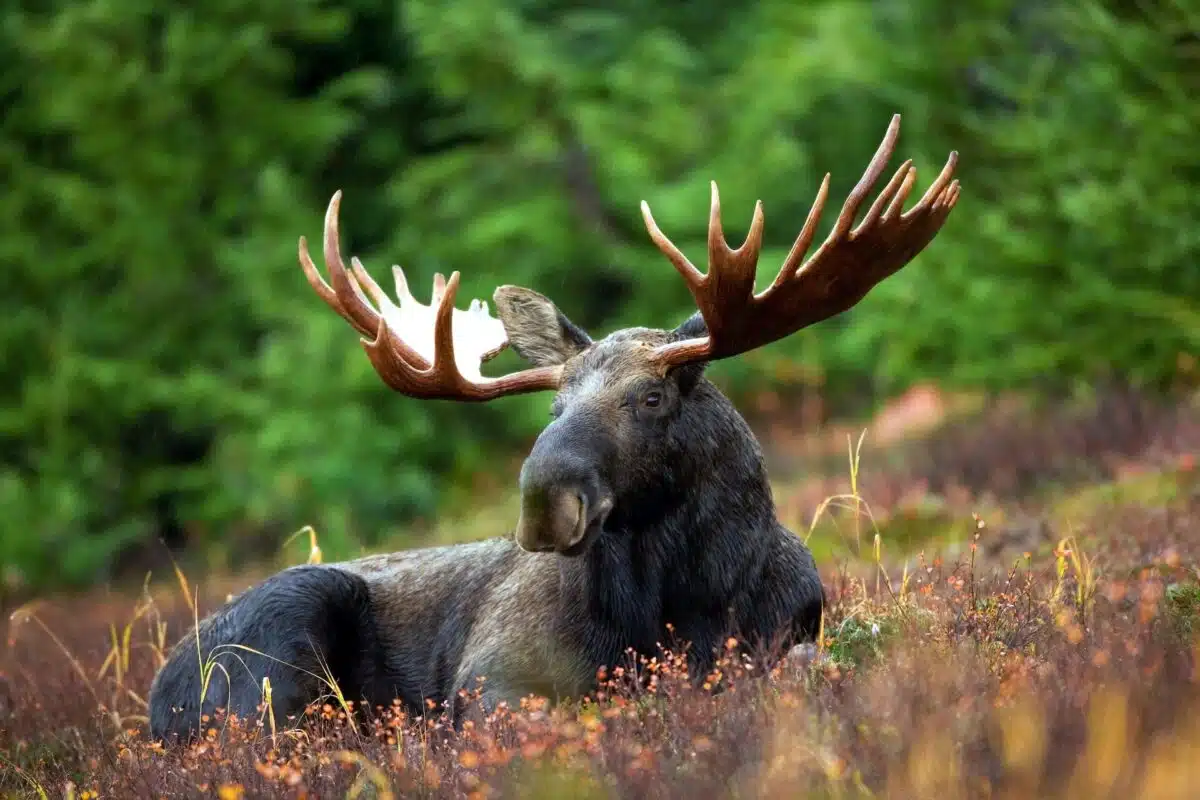Have You Ever Wondered How Big A Moose Actually Is?
The moose is one of the biggest members of the deer family, and its size is truly awe-inspiring. The species can easily reach 6 feet (1.83 m) at their shoulders, and males weigh between 800–1,500 lb (363-680 kg).
Introduction
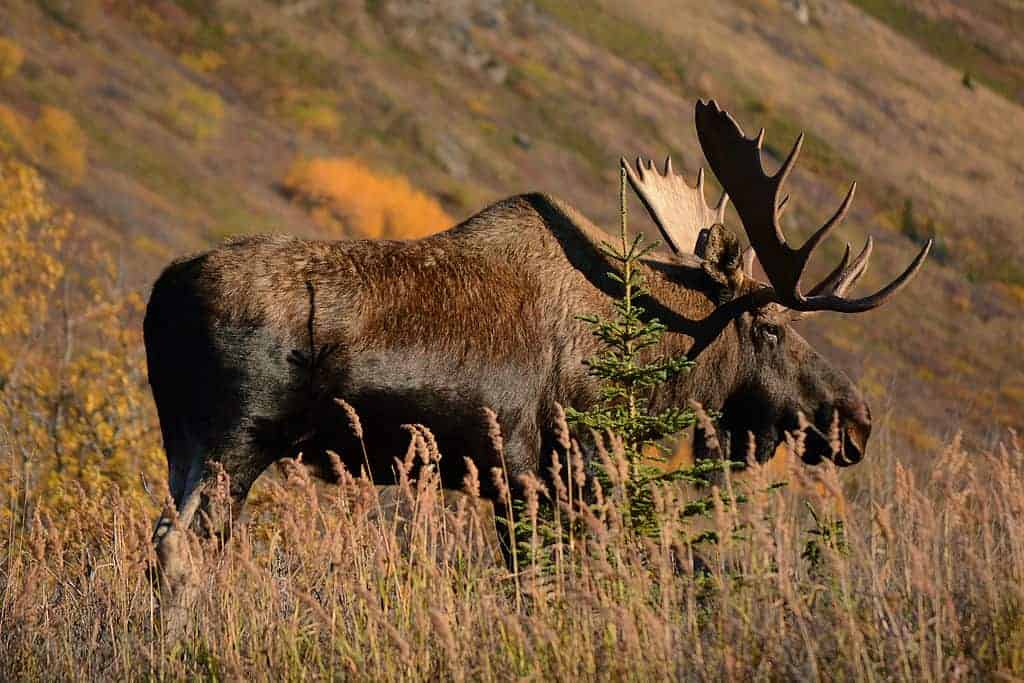
The moose is one of the largest ungulates in North America. In this article, we’ll dive deep into all things significant about the majestic moose.
Types of Moose and Their Size Differences
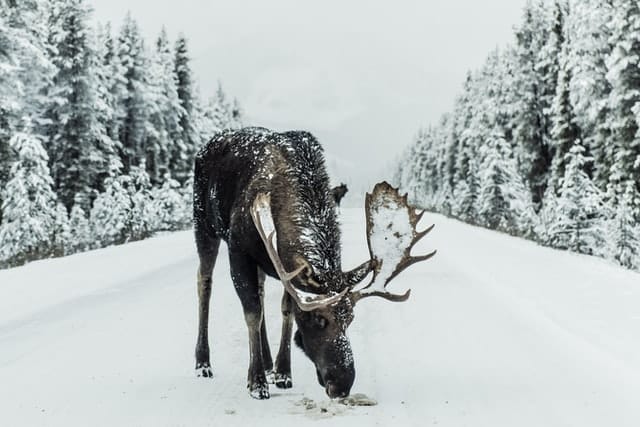
The two main moose species are Alces alces (commonly known as the Eurasian elk) and Alces americanus (the American or western moose). The Eurasian Elk is more giant, with adults standing between 5.5 to 7.0 feet at the shoulder, while American Moose are typically shorter, with adults reaching 4.9 to 6.6 feet at the shoulder.
Eurasian Elk can weigh up to 1,400 pounds, while American Moose can reach up to 1,000 pounds due to their slightly smaller body mass. Eurasian Elk have antlers that are wider and more flattened than those of American Moose, which have thinner and more pointed antlers.
Furthermore, the coat coloration of an adult Eurasian Elk tends to be a darker brown hue than that of an American Moose’s lighter tan hue.
Both species possess impressive large bodies with thick fur coats and powerful hind legs that help them easily traverse rugged terrains like swamps or mountainous areas.
Additionally, both types of moose are herbivores and feed mainly on aquatic plants such as water lilies or horsetail reeds during summer months and sticks and shrubs during winter months for sustenance.
Factors that Influence the Size of Moose
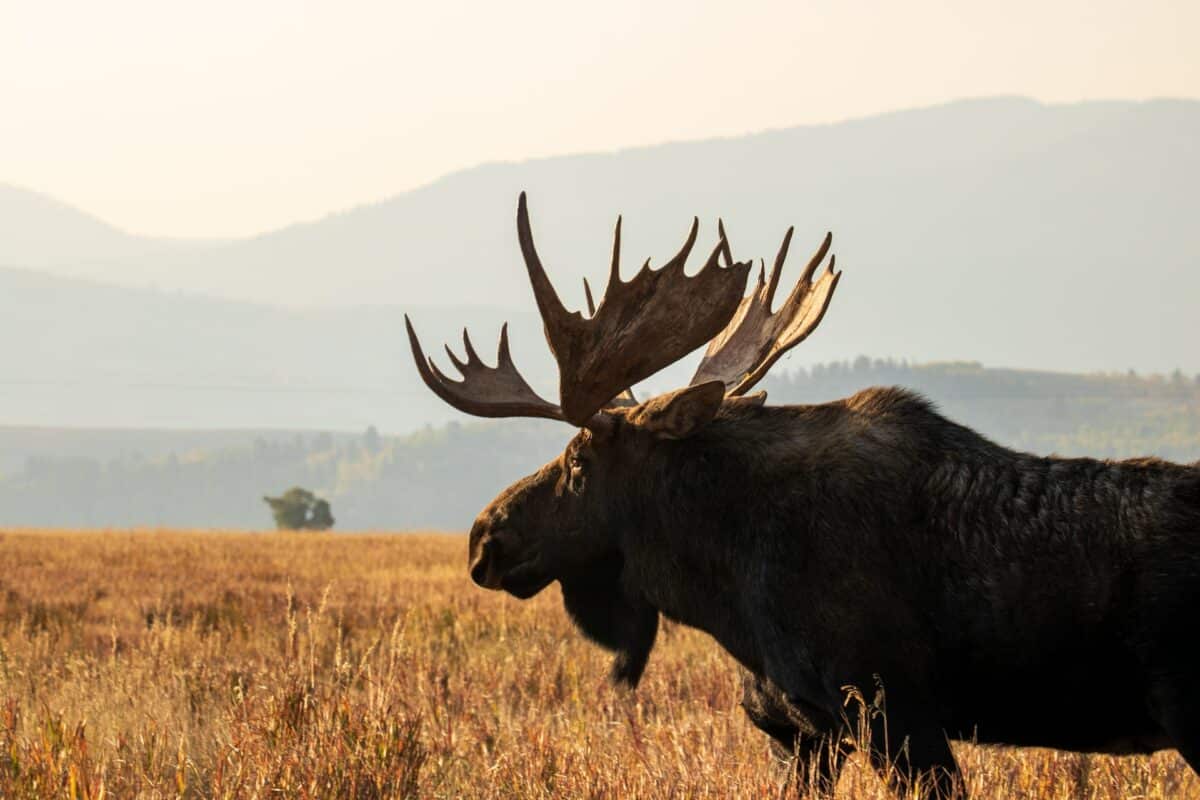
Several environmental and genetic factors determine the size of moose. Environmental factors such as climate and geographic region can play a significant role in influencing the size of moose.
Those living in northern regions tend to be larger than those in warmer climates. Additionally, conditions such as access to food sources and competition from other animals can affect their growth rates.
Genetic factors also influence the size of moose. Bull moose are usually giant than cows due to their gender-based hormone differences, resulting in greater muscle mass for males.
Furthermore, variations between different subspecies of moose can contribute to size differences due to individual genetic traits passed down through generations.
Moose populations grow or decline depending on their environment, habitat availability, and predator-prey relationships. Hunting regulations can also impact moose numbers.
In areas where hunting is limited, prominent individuals may out-compete smaller ones for resources, increasing average body sizes across all individuals within that population.
The Average Size of a Bull Moose
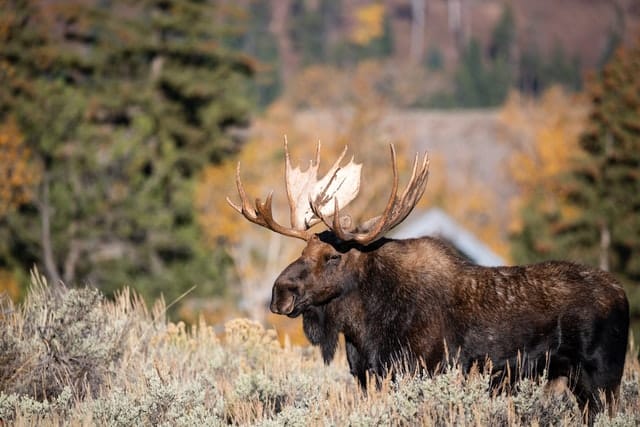
The males typically reach weights between 875 and 1,600 lbs and stand 6-7 feet high at the shoulder. Males also have huge antlers, measuring up to 5 feet wide from tip to tip. The moose’s long legs, huge neck, and bulky body all combine to give it an imposing stature among other animals in its natural habitat.
Agility:
Despite their size, they can run up to 35 mph when necessary. They have also been known to swim up to 6 miles across open water. This incredible strength and speed help them daily as they forage for food or defend themselves from predators like wolves or bears.
Color Blend:
The coat of the bull moose is thick and consists of two layers: a top layer of hollow guard hair that helps insulate against cold weather; and an undercoat made up of soft downy fur that provides warmth during the winter months. Their coloring varies slightly depending on the animal – ranging from a light tan to a dark brown – but all have the signature long muzzle common among their species.
Shear Size:
Bull moose are majestic beasts whose size commands respect even from humans who cross their path. While they may seem intimidating due to their size, they generally prefer flight over fight when faced with danger, making them easy to admire rather than fear.
Differentiating Between Male and Female Moose
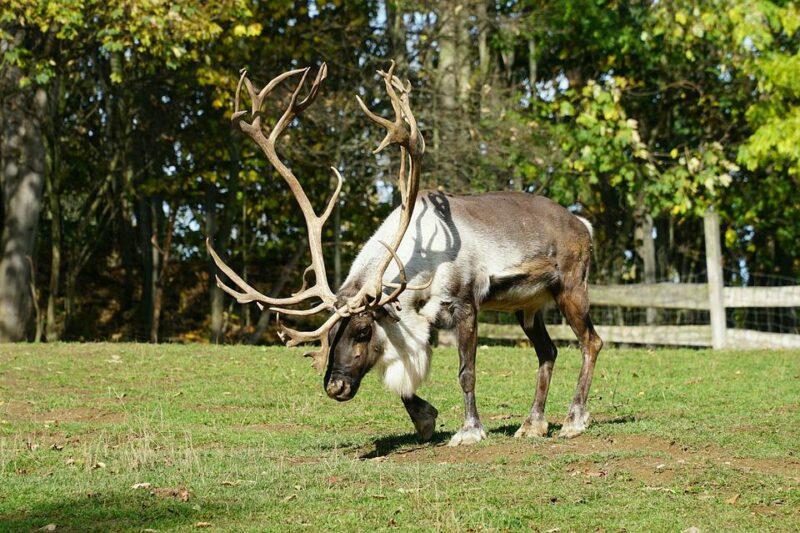
Male and female moose differ in several ways. The most visible difference is in size, with the males being much larger than the females. Male moose, also known as bulls, can weigh up to 1,500 pounds and stand over 7 feet tall at the shoulder.
Female moose, or cows, typically weigh between 500 and 900 pounds and reach heights of 6 feet at the shoulder. Male moose also possess large antlers used in courtship displays during mating season. Female moose lack antlers but have a small hump on their heads which helps identify them from a distance.
Another key difference between male and female moose is their behavior patterns during the mating or rutting season. During this time, male bulls establish harems of up to 20 cows by bugling loudly and fighting other contenders for dominance.
The cows will then choose which bull they want to mate with based on appearance and size. During this time, bulls can become very aggressive, so it’s essential to be aware of their presence when hiking or exploring areas inhabited by moose.
While both male and female moose feed mainly on grasses and plants, males prefer shrubs, while females prefer aquatic vegetation like pondweed and lilies found near bodies of water such as lakes or rivers.
Females also require more water than males due to lactation after giving birth in the late spring/early summer months, whereas males are not required to drink as much moisture since they have no offspring that need nourishment.
Overall there are many differences between male and female moose, from size and antlers down to diet preferences; understanding these differences is essential for anyone hoping to coexist peacefully with these majestic animals in the wild!
Tracking the Growth Rate of Moose

The growth rate of moose populations has been monitored closely over the last few decades. The moose population is generally increasing, with some exceptions in areas of Canada and Alaska, where numbers have declined in recent years due to habitat loss and climate change.
In the United States, the growth rate for moose populations is estimated to be about 6-7% per year. This number depends on factors such as local environmental conditions and human impacts.
For example, the growth rate can be higher in regions with less development or predation from large predators. Conversely, the growth rate can be lower in areas with more roads or highways due to increased traffic mortality rates.
Reproduction & Decline
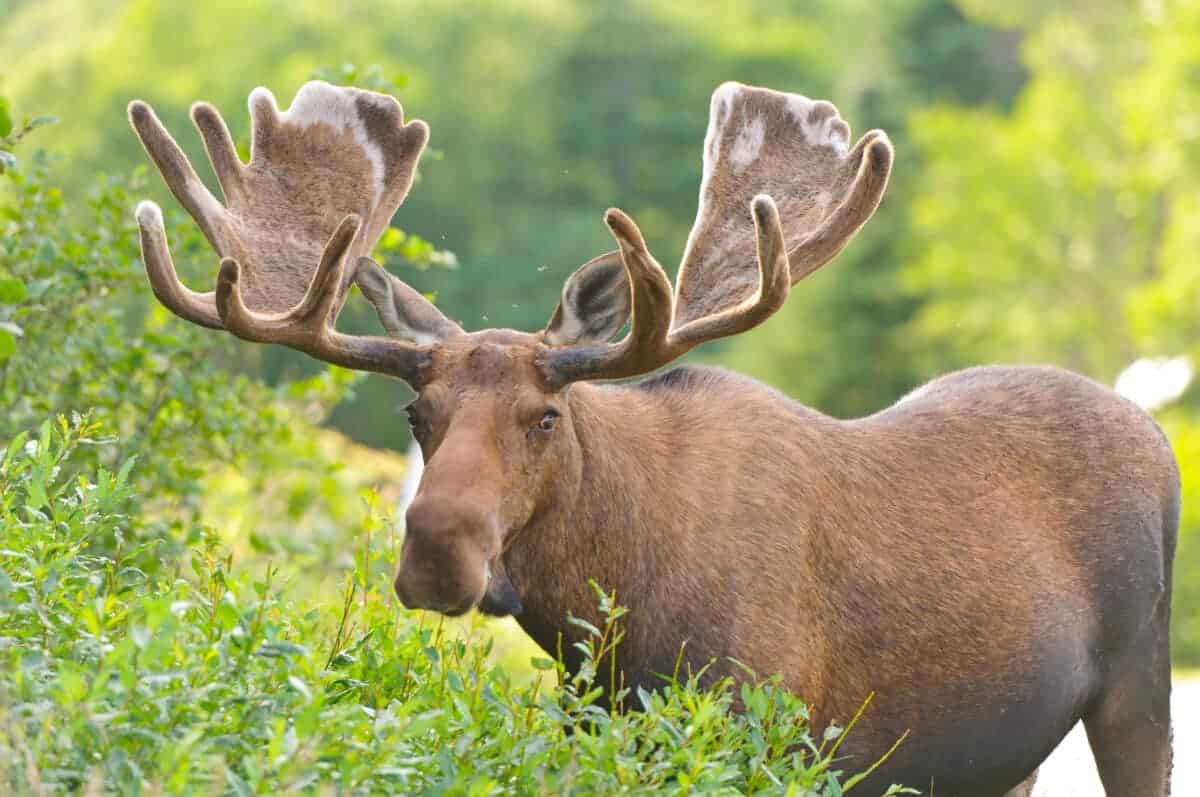
Also, moose have an impressive reproductive rate. They typically give birth to twins each spring after a gestation period of 8-9 months. It’s estimated that female moose reach sexual maturity between 2-3 years old, while males tend to mature at 4-5.
The drop in specific subspecies of moose due to human influence threatens their overall population stability; this is why conservation efforts are so important today. By protecting habitats and
Limiting traffic around certain areas can help ensure that these creatures continue to thrive for generations to come.
Wrapping Up
Thanks for following along with us!
Have you checked out our forum yet? Join the conversation here!
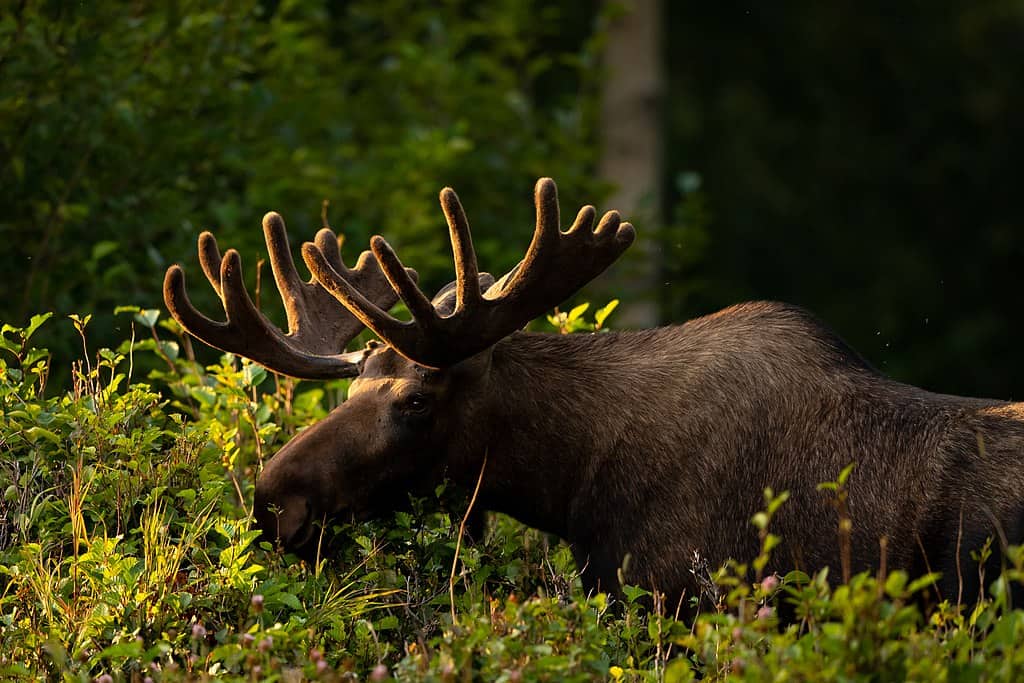
Join our Forum for free today!

- Big Cats Love Mouthing Affection - July 22, 2024
- Kind Elephant Merciful To Lion Cubs - July 22, 2024
- Beachgoers Save Massive Shark Stranded In Florida - July 22, 2024

